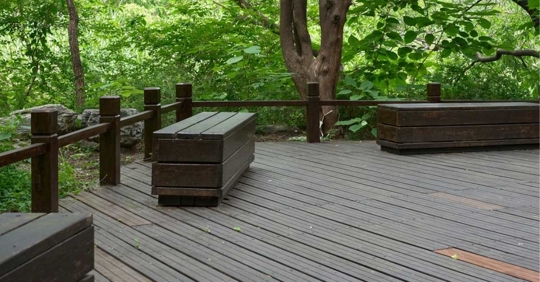The peace and quiet of your Walnut Creek home can quickly be disrupted when you suspect uninvited guests have taken up residence right under your nose. If you have a deck, outdoor shed, or even a crawl space, you know these areas offer appealing shelter for various wildlife. Raccoons and skunks, in particular, are common culprits that seek out such protected spots.
Discovering their presence early is key to preventing further issues and ensuring the safety of your family and pets. This guide will help you identify the telltale signs of these nocturnal neighbors so you can take appropriate action.
Concerned about unusual noises or smells coming from under your deck? Don't wait! Visit our wildlife control page for immediate assistance in Walnut Creek and the surrounding East Bay.
Unmasking the Culprits: Decoding the Signs of Unwanted Guests
While both raccoons and skunks might choose your deck as a cozy hideout, they leave behind distinct clues. Knowing what to look for can help you determine which creature you're dealing with and inform your next steps.
Identifying Raccoon Presence
Raccoons are notoriously curious and adaptable animals. Their activities often leave behind clear indicators of their presence.
- Distinctive Droppings: Raccoon droppings are typically dark, tubular, and about 3/4 inch in diameter, often containing undigested food like berries or seeds. They frequently establish latrines, or communal defecation sites, which can be found at the base of trees, on logs, or even on elevated surfaces like decks or roofs. These concentrated areas of waste can pose health risks.
- Track Marks: Raccoons have five toes on both their front and hind paws, and their tracks often resemble small human hands. Their front paws are particularly dexterous, allowing them to manipulate objects. Look for tracks in soft soil, mud, or even dust around the perimeter of your deck.
- Nocturnal Noises: Raccoons are primarily active at night. If you hear scratching, rustling, chittering, or even what sounds like small growls coming from under your deck after dusk, it's a strong indicator of raccoon activity. They might also make thumping sounds as they move around.
- Damage to Your Deck or Property: Raccoons are strong and can cause significant damage. They might tear at screening, chew on wood, or pull up insulation to gain access or create a more comfortable den. Look for gnaw marks, ripped materials, or disturbed areas near entry points.
- Missing Pet Food or Garbage: Raccoons are opportunistic feeders and are highly attracted to readily available food sources. If you notice your pet's outdoor food bowl consistently emptied overnight, or if your garbage cans are frequently tipped over and their contents scattered, raccoons are likely the culprits. They are adept at opening lids and can squeeze into surprisingly small spaces.
- Strong, Musky Odor: While not as pungent as skunk spray, raccoons can leave behind a distinct, somewhat musky odor, especially if they have established a den. This smell might become more noticeable on warm days.
Recognizing the Signs of a Skunk Problem
Skunks, while also nocturnal, tend to be a bit more subtle in their presence, save for their unforgettable defense mechanism.
- The Unmistakable Odor: This is by far the most obvious sign of a skunk's presence. The powerful, sulfuric odor of skunk spray can linger for days, even weeks, and is easily identifiable. If you catch a whiff of this distinct smell, especially at night, a skunk is almost certainly nearby. The smell might be strongest early in the morning or late in the evening.
- Small, Shallow Digging: Skunks are prolific diggers, primarily in search of grubs, insects, and other food sources in your lawn or garden. Look for small, conical holes, typically 3-5 inches wide, that resemble divots made by an ice cream scoop. These are often found in lawns, under bushes, or near foundations.
- Footprints: Skunk tracks are typically longer and narrower than raccoon tracks. They also have five toes, but their claws often show in the print. Their front paws are used for digging, while their hind paws are more for propulsion.
- Damage to Lawns or Gardens: Beyond digging for food, skunks can also damage flowerbeds or vegetable gardens as they forage. You might notice plants uprooted or small areas of turf overturned.
- Faint, Pungent Scent Trails: Even without a full-on spray, skunks can leave a faint, lingering odor, especially if they've been spending a lot of time in a particular area. This might be noticeable if you lean close to your deck or a nearby shed.
- Less Vocal Than Raccoons: Skunks are generally much quieter than raccoons. While they can make hissing, chattering, or stomping noises when agitated, you're less likely to hear a variety of vocalizations from them unless directly provoked.
Why Knowing the Difference Matters
Distinguishing between raccoons and skunks is crucial for several reasons. Different wildlife control methods may be more effective for one species over another. Additionally, skunks are known carriers of rabies in some areas, and handling them directly can be risky.
Raccoons can also carry diseases, including rabies and roundworm, making direct contact ill-advised. Understanding which animal is present helps California Exterminating Services develop a targeted and effective removal strategy, prioritizing the safety of your household.
Taking Action: What to Do Next
Once you've identified the likely culprit, it's important to avoid direct confrontation. Wild animals can be unpredictable, especially if they feel cornered or threatened. The best course of action is to contact professionals who are experienced in humane wildlife removal.
California Exterminating Services specializes in safely and effectively removing unwanted wildlife from homes in Walnut Creek and throughout Lamorinda, Danville, and the East Bay. Our approach is designed to resolve your immediate problem while helping prevent future intrusions.
Preventing Future Unwanted Visitors
After the current residents have been safely relocated, taking steps to make your property less appealing to wildlife is essential.
- Secure Food Sources: Store garbage in sturdy, lidded cans, and bring pet food indoors, especially at night. Consider using wildlife-resistant trash can lids or securing cans with bungee cords.
- Seal Entry Points: Inspect your deck, shed, and home for any gaps, holes, or weakened areas that could serve as entry points. Repair and seal these openings with durable materials like hardware cloth or sturdy wire mesh.
- Clear Debris: Remove piles of brush, wood, or other debris from your yard that could provide shelter.
- Trim Landscaping: Keep shrubs and trees trimmed away from your home's exterior, as these can provide easy access to roofs and other elevated areas.
- Install Exclusion Barriers: For decks and sheds, consider installing exclusion barriers like L-shaped fencing that extends underground to prevent digging animals from getting underneath.
Having raccoons or skunks under your deck can be a worrying situation, but with the right information and professional assistance, it’s a problem that can be resolved. If you suspect either of these animals has made a home on your property in Walnut Creek or the surrounding East Bay, don’t hesitate to reach out.
Our team at California Exterminating Services is ready to help you identify the issue and implement a safe, effective solution. Contact us through our online contact form or call us at (925) 438-6454 to restore peace and security to your home.


